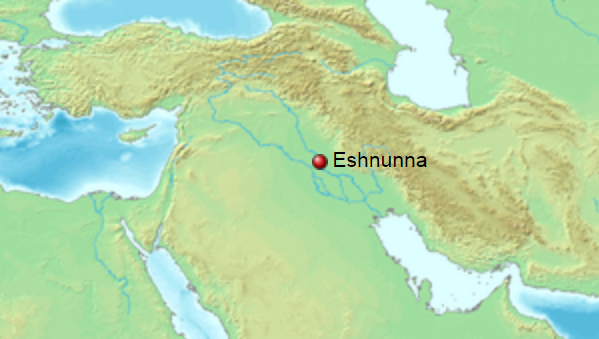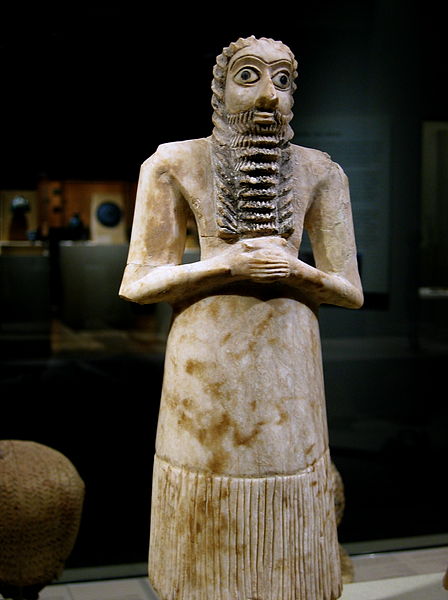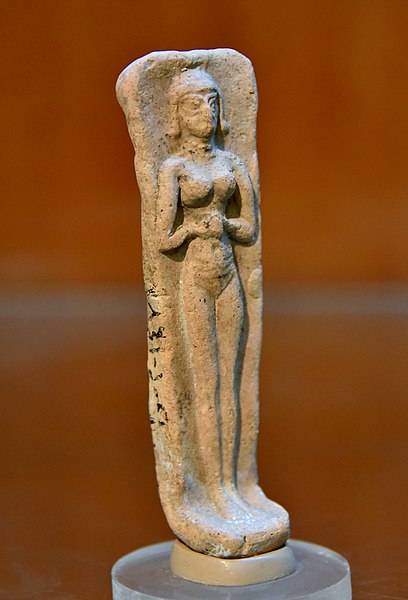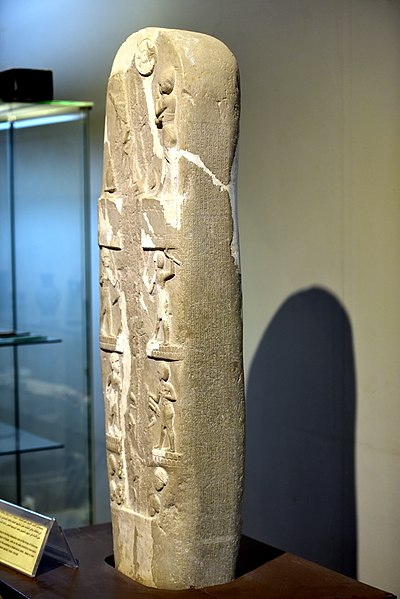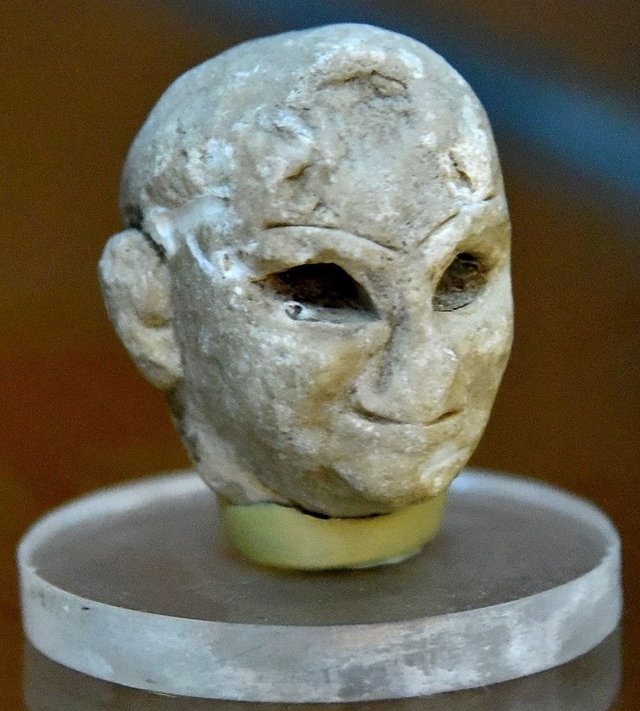
| ESHNUNNA Eshnunna c. 3000 BC - c. 1700 BC :
Location of Eshnunna Capital : Eshnunna
Coordinates : 33°29'3 N 44°43'42 E
Government : Monarchy
• c. 2000 BC : Urguedinna (first)
• c. 1700 BC : Silli-Sin (last)
Historical era : Bronze Age
• Established : c. 3000 BC
• Disestablished : c. 1700 BC
Preceded by : Apum
Succeeded by : First Babylonian dynasty
Today part of : Iraq
Eshnunna (modern Tell Asmar in Diyala Governorate, Iraq) was an ancient Sumerian (and later Akkadian) city and city-state in central Mesopotamia. Although situated in the Diyala Valley north-west of Sumer proper, the city nonetheless belonged securely within the Sumerian cultural milieu.
The tutelary deity of the city was Tishpak (Tišpak).
History :
Sumerian male worshiper, in alabaster with shell eyes. It is of the twelve statues found in the Tell Asmar Hoard
Extent of Eshnunna's influence c. 1764 BC (in light blue) Occupied since the Jemdet Nasr period around 3000 BCE, [clarification needed] Eshnunna was a major city during the Early Dynastic period of Mesopotamia, beginning with the rise of the Akkadian Empire. The first king of the city was a governor under the Third dynasty of Ur named Ituria. Ituria built a palace and a temple dedicated to Shu-Sin. The next king was Shu-ija, who declared independence from Ur in 2026 BCE. Shu-ija's successors used the title of governor, not king, as the title of king of the city belonged to Tishpak, the city's god.
In 2010 BCE, King Nurahum I of Eshnunna and the city of Isin won a battle against the city of Subartu. The following kings, named Kirikiri and Bilalamaboth, had Elamite names, suggesting that Eshnunna retained good relationships with the Elamites, although it seems unlikely they were conquered by them. The city was later sacked, possibly by Anum-Muttabbil of Der. As such, little is known about its next kings. By 1870 BCE, Eshnunna was revived. This could have occurred due to the decline of the cities of Isin and Larsa.
During the years in between 1862 and 1818 BCE, King Ipiqadad II conquered the cities of Nerebtum and Dur-Rimush. From 1830-1815 BCE, king Naramsin expanded Eshnunna's territory to Babylon, Ekallatum, and Ashur. In 1780 BCE the kingdom of Assyria, led by Shamshi-Adad I, attacked Eshnunna and reconquered the cities of Nerebtum and Shaduppum. These cities were later conquered by Eshnunna in 1776 BCE following Shamshi-Adad's death. In 1764 BCE, King Silli-Sin formed a coalition with Mari to attack Babylon, but this failed. Following Eshnunna's capture by Babylon in 1762 BCE, the city suffered a great flood. During 1741-1736 BCE Eshnunna's governor Anni sided with a king of Larsa in a rebellion against Babylon. Anni was captured and executed by the Babylonians, and the city itself was destroyed by Hammurabi.
Because of its promise of control over lucrative trade routes, Eshnunna could function somewhat as a gateway between Mesopotamian and Elamite culture. The trade routes gave it access to many exotic, sought-after goods such as horses from the north, copper, tin, and other metals and precious stones. In a grave in Eshnunna, a pendant made of copal from Zanzibar was found. A small number of seals and beads from the Indus Valley Civilization were also found.
Archaeology :
Old-Babylonian plaque of a nude female, from Tell Asmar, Iraq The remains of the ancient city are now preserved in the tell, or archaeological settlement mound, of Tell Asmar, some 38 km northeast of Baghdad and 15 km in a straight line east of Baqubah. It was first located by Henri Pognon in 1892 but he neglected to report the location before he died in 1921. It was refound and excavated in six seasons between 1930 and 1936 by an Oriental Institute of the University of Chicago team led by Henri Frankfort with Thorkild Jacobsen and Seton Lloyd. The expedition's field secretary was Mary Chubb.
Despite the length of time since the excavations at Tell Asmar, the work of examining and publishing the remaining finds from that dig continues to this day. These finds include roughly 1,500 cuneiform tablets.
In the late 1990s, Iraqi archaeologists worked at Tell Asmar. The results from that excavation have not yet been published.
Stele of Dadusha
Laws of Eshnunna :
Square Temple of Abu :
Head of a statue from Tell Asmar, excavated by the Oriental Institute in 1933. The Sulaymaniyah Museum During the Early Dynastic period, the Abu Temple at Tell Asmar (Eshnunna) went through a number of phases. This included the Early Dynastic Archaic Shrine, Square Temple, and Single-Shrine phases of construction. They, along with sculpture found there, helped form the basis for the three part archaeological separation of the Early Dynastic period into ED I, ED II, and ED III for the ancient Near East. A cache of 12 gypsum temple sculptures, in a geometric style, were found in the Square Temple; these are known as the Tell Asmar Hoard. They are some of the best known examples of ancient Near East sculpture. The group, now split up, show gods, priests and donor worshippers at different sizes, but all in the same highly simplified style. All have greatly enlarged inlaid eyes, but the tallest figure, the main cult image depicting the local god, has enormous eyes that give it a "fierce power".
Rulers :
Source :
https://en.wikipedia.org/ |
